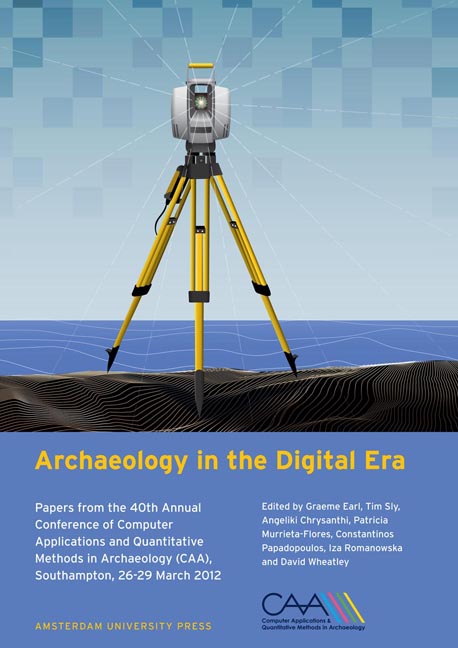 Archaeology in the Digital Era
Archaeology in the Digital Era Least-cost Networks
Published online by Cambridge University Press: 16 February 2021
Summary
Abstract:
Many archaeologists applying GIS software for least-cost studies do not fully understand the functions employed to create least-cost networks, and so they are not aware of the prerequisites and drawbacks of the model implemented by the software. This paper discusses several models for connecting dots on the map resulting in least-cost networks: all pair shortest paths, least-cost network to the builder, network connecting the nearest neighbours, triangulation network, minimum spanning tree, central point network, and main travel route with subsidiary paths. Most of the models are applied to a study region in the Bergisches Land, Germany. This region provides less attractive natural conditions than the area close to the Rhine, and for this reason, only very few settlements existed in this region prior to the year 1000AD. Detailed historical sources and old maps are available to check whether the models agree with the historical reality.
Keywords:
Least-Cost Paths, Networks, Triangulation, Minimum Spanning Tree, Steiner Tree
Introduction
Many archaeological least-cost path (LCP) studies deal with networks, i.e. the aim is to reconstruct a network of routes (e.g. van Leusen 2002, 16-12-16-18; Bell et al. 2002). This paper discusses a set of models each minimizing costs in some sense but resulting in a different network topology. Unfortunately, most push-button GIS software packages do not support different LCP network models, and hardly any information can be found in the documentation of the software concerning the models and algorithms used for calculating least-cost networks. Consequently, most archaeologists applying this software are not aware that different models exist and that the software might not be appropriate for the model they have in mind.
The first part of this paper deals with models where all nodes of the network are known. In this case, the aim is to reconstruct links between these nodes so that the network costs are minimized according to some criteria. The second part introduces methods for reconstructing paths when only some important locations are given or a main travel route is known.
A hilly study area east of Cologne, Germany, serves as a test landscape.
- Type
- Chapter
- Information
- Archaeology in the Digital EraPapers from the 40th Annual Conference of Computer Applications and Quantitative Methods in Archaeology (CAA), Southampton, 26-29 March 2012, pp. 237 - 248Publisher: Amsterdam University PressPrint publication year: 2014


